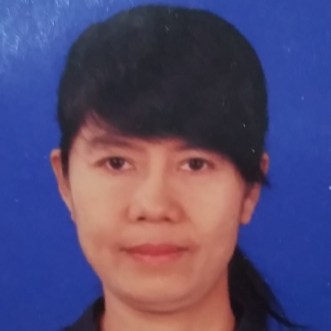
Aye Thida
Work place: Faculty of Computer Science, Artificial Intelligence Lab University of Computer Studies, Mandalay, Myanmar
E-mail: ayethida.royal@gmail.com
Website:
Research Interests: Computer systems and computational processes, Natural Language Processing, Computer Architecture and Organization, Data Structures and Algorithms
Biography
Aye Thida
Aye Thida is a Professor, at Faculty of Computer Science, Artificial Intelligence Lab), University of Computer Studies, Mandalay (UCSM), Myanmar. Her research interests include in Machine Translation, Text to Speech System and Big Data Management. She is currently working NLP researches. She received B.Sc(Hons:), Maths degree from the Mandalay University, Myanmar and her M.I.Sc and Ph.D degrees in Computer Science from the University of Computer Studies, Yangon(UCSY), Myanmar.
Author Articles
Phoneme Concatenation Method for Myanmar Speech Synthesis System
DOI: https://doi.org/10.5815/ijitcs.2018.12.02, Pub. Date: 8 Dec. 2018
This paper discusses the approach used to develop a Text-to-Speech (TTS) synthesis system for the Myanmar language. Concatenative method has been used to develop this TTS system using phoneme as the basic units for concatenation. In this proposed system, phoneme plays an important role so that Myanmar phoneme inventory is presented in detail. In Myanmar language, schwa is the only vowel that is allowed in a minor syllable or consonant that has half-sound of the original one. If these half sound can be handled, the TTS quality will be high. After analyzing the number of phoneme and half-sound consonant to be recorded, create the Myanmar phoneme speech database which contains total 157 phoneme speech sounds that can speech out for all Myanmar texts. These phonemes are fetched according to the result from the phonetic analysis modules and concatenated them by using proposed new phoneme concatenation algorithm. According to the experimental results, the system achieved the high level of intelligibility and acceptable level of naturalness. As the application area, it is intended for the resource limited device to use as language learning app and so on.
[...] Read more.A Comparison between Syllable, Di-Phone, and Phoneme-based Myanmar Speech Synthesis
DOI: https://doi.org/10.5815/ijitcs.2018.11.06, Pub. Date: 8 Nov. 2018
Among the speech synthesis approach, concatenative method is one of the most popular method which can produce more natural sounding speech output. The most important challenge in this method is choosing an appropriate unit for creating a database. The present used speech units are word, syllable, di-phone, tri-phone and phoneme. The speech quality may be trade-off between the selected speech units. This paper presents the three speech synthesis system of Myanmar language, respectively based on syllable, di-phone and phoneme speech units by using concatenation method. Then, we compare the speech quality of the three systems, using the subjective tests.
[...] Read more.Text Summarization System Using Myanmar Verb Frame Resources
DOI: https://doi.org/10.5815/ijitcs.2018.10.03, Pub. Date: 8 Oct. 2018
In today’s era, when the size of information and data is increasing exponentially, there is an upcoming need to create a concise version of the information available. Until now, humans have tried to create “summaries” of the documents. Especially, Myanmar Natural Language Processing does not have computerized text summarization. Therefore, this paper presents a summary generation system that will accept a single document as input in Myanmar. In addition, this work presents analysis on the influence of the semantic roles in summary generation. The proposed text summarization system involves three steps: first, the sentences are parsed using Part of Speech tagger with Myanmar Language Tool Knowledge Resource (ML2KR); secondly, pronouns in the original text are resolved using Myanmar Pronoun Resolution Algorithm (MPAR); thirdly, the sentences are labeled with semantic roles using Myanmar Verb Frame Resource (MVF), finally, extraction of the sentences containing specific semantic roles for the most relevant entities in text. After that, the system abstracts the important information in fewer words from extraction summary from single documents.
[...] Read more.Myanmar-English Bidirectional Machine Translation System with Numerical Particles Identification
DOI: https://doi.org/10.5815/ijitcs.2016.06.05, Pub. Date: 8 Jun. 2016
This paper the development of Myanmar-English bidirectional machine translation system is implemented applying Rule based machine translation approach. Stanford and ML2KR parsers are used for preprocessing step. From this step, parsers generate corresponding parse tree structures. Used parsers generate corresponding CFG rules which are collected and created as synchronous context free grammar SCFG rules. Myanmar language can be written free order style, but it must be verb final structure. Therefore, CFG rules are required for reordering the structure of the two languages. After that tree to tree transformation is carried on the source tree structure which corresponds with used parser (Stanford parser or ML2KR's parser). When source parse tree is transformed as target parse tree, it is changed according to the SCFG rules. And then system carries out the morphological synthesis. In this stage, we need to solve only for English to Myanmar machine translation because Myanmar language is morphologically rich language. Therefore, particles for Myanmar language can be solved in this system by proposed algorithm. After finishing morphological synthesis, this system generates meaningful and appropriate smoothing sentences.
[...] Read more.Other Articles
Subscribe to receive issue release notifications and newsletters from MECS Press journals